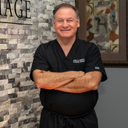Posted underFacelift q&a
SMAS and skin fascia, what are the major differences between a Facelift where the skin is moved and SMAS?
Does cheek skin fascia get cut and skin detached from muscle in SMAS surgery or in SMAS skin is not getting detached from muscle but moved together with a muscle (and after that muscle cut or tighten)? I want to understand the major difference between facelift where just skin moved and SMAS Thank you!
Answers (30)
From board-certified doctors and trusted medical professionals

Dr. William Townley, MD, FRCS(Plast)
Specialist Registered Plastic Surgeon
Answer








